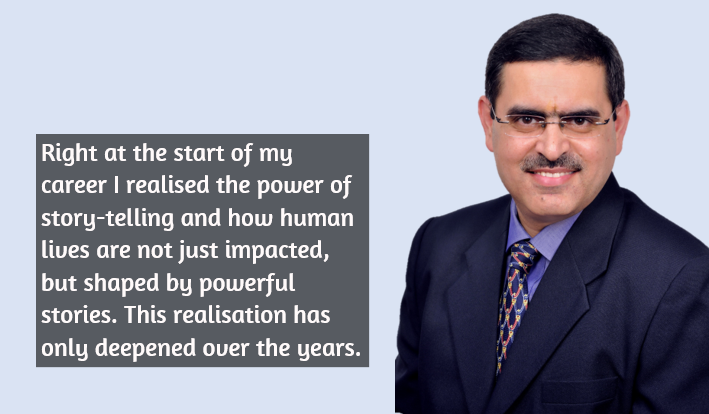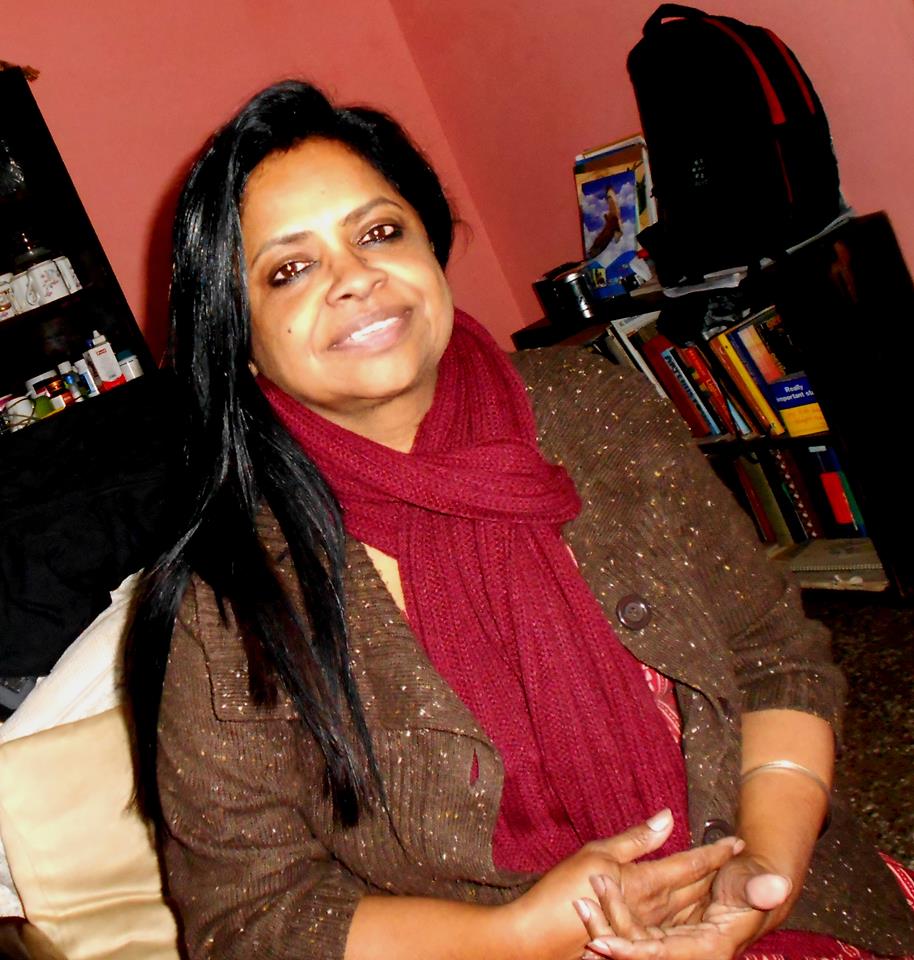It was the power of good story-telling that made him step into the world of brand communications. A compelling story, especially when it catches the attention of consumers, can create magic – was something that Tushar Makkar, Group Chief Communications Officer, GMR Group discovered along his journey.
Having a definite advantage of working with diverse businesses, Tushar strongly feels that “adapting to any new requirement or scenario is rooted in how quickly one is able to learn and unlearn”. He has been involved in communication, PR and marketing business in India, playing the role of business leader, an advisor, communications trainer and thought leader. Prior to this role, he was leading communications at Arvind Group of Companies. His track record shows that he has over two decades of experience in the communications domain with stints at SAP India as Director – Communications & Strategy, Microsoft as Head – Business Value Communications and IBM as Regional Communications Manager too.
In this conversation with Shree Lahiri, he touches upon the early part of his career, his achievements, the evolution of PR, some memorable campaigns, learnings, some tips for new entrants and more….
RT: You have been in the business of communication for over two decades. Why did you choose this field as a career?
TM: My first brush with the field of communications happened when O&M (Ogilvy & Mather, as it was known then) visited my campus for seeking talent. O&M’s campus process got me interested in the field of communications for the first time and as I studied the great work that O&M was doing, my interest in this field developed further. I realised the power of story-telling and how human lives are not just impacted but shaped by powerful stories. This realisation has only deepened over the years.
RT: Your last three jobs have been in technology, textile and infrastructure – each different from the other. How does a professional adapt to new sectors?
TM: I have had the opportunity of spending a long time working with technology companies. The field of technology strives to have a forward-looking view of every single business it is enabling. While one may argue that this would give an advantage to work in diverse industries, the fact also is that every business today is deeply rooted in innovation. The younger generation of business leaders is driving innovation fast and the so-called traditional sectors are emulating the overall DNA of a fast-moving new age business. Therefore, bucketing by industry may not be the only view to consider.
Nonetheless, adapting to any new requirement or scenario is rooted in how quickly one is able to learn and unlearn. Understanding new business and cultural requirements are an integral part of the package. In my case, not only have the last few assignments been in diverse industries but it’s been a steep cultural curve to ascend as well. Moving from tech MNCs to promoter-run Indian business houses has been one crucial aspect of the transition. The other has been moving from a single-business set-up to conglomerates with multiple business interests. Moreover, these assignments have been across different geographies in the country offering a spectrum of cultures.
While every individual is unique and may devise his or her own way to adapt, my personal mantra has been to rely heavily on people around me to learn as much as possible. Your business leaders are the ones who got you into the organisation in the first place and are committed to your success and learning. Your own team members help you learn and scale quickly. Your business partners bring specialised expertise and talent and are a source to learn from. While working with our partners and firms, one important parameter of success of the relationship should be whether we are learning enough from their expertise.
From a functional perspective, adapting to a new scenario requires the following ingredients:
- Focus on the fundamentals of communication
- Develop a strong understanding of the business you are in and the current context of the business
- Devise the right mix of traditional and modern communications mix for the specific situation
- Provide challenges to your team and trust their capabilities
RT: You took up the role of Group Chief Communications Officer at GMR in 2019. What have been your significant achievements so far?
TM: GMR is a diversified conglomerate operating across a variety of businesses in the infrastructure domain. One can understand that the requirements across airports, power plants, highways, SEZs and more can be quite varied and yet specific to their own domain. Over the past several months, we have been working to bring about a stronger integration amongst our diverse teams located across the length and breadth of the country. This has been bearing fruit for the mutual good of the organisation and people. While people’s roles, understanding and canvas of business now have a broader horizon, the organisation is able to leverage the strength of their skillsets much better. In summary, we now operate as one national team handling one integrated agenda with every individual having an opportunity to contribute to the group in addition to the current business/role one is assigned to.
RT: What have been your three most important learnings as a corporate communications leader?
TM: Be a sponge: learn from everywhere, including from your consultancies – the best consultancy for a business is from where in-house teams can learn the most.
Play an integrating role in the organisation: communications as a central function brings a comprehensive view. Leverage this view to integrate various aspects of business for the organisation.
People are the key: trust people, hire smart individuals and empower them.
RT: How do you see the evolution of Public Relations, five years from now?
TM: The response to this question is rooted in specific emerging trends:
- The rise of modern communications and digital modes: This gives us an opportunity to reach our target audience with a focus that traditional media lacked. Not only can we be more targeted but owned channels are assuming a role that didn’t exist a few years ago. In fact, research has proven that owned channels are amongst the most trusted source of information.
- Indian brands are going international and therefore the world is our playground: Brands with a higher familiarity factor have a higher probability of success in newer markets. Turning Indian brands into global ones will be a significant opportunity for the function of communications.
- Increasing significance of integrated programmes: Our target audience is now consuming content in newer and multiple ways. Just a newspaper or a news channel is not enough.
- Increasing role of technology: Fast evolving areas like Artificial Intelligence, Machine Learning, Data Analytics and so on will have a significant impact on the function of communications by bringing in deeper and specific insights.
Plus, Covid-19 may throw up scenarios and possibilities that we have not imagined earlier.
However, despite this evolution, the key outcome will still remain establishing trust for our brands with the ecosystem.
RT: Name two PR campaigns from any brand that have stood out for you.
TM: My all-time favourites are the two films “Miley sur mera tumhara” and the “Freedom Flame torch” with Indian athletes. The spirit of national integration these evoked decades back remains unaltered, even today.
RT: What is the one campaign that you worked on and are proud of till date?
TM: In the year 2002, I was head of brand for Grow Talent Company Limited. We were a start-up in the HR domain and were seeking ways to build our brand. We found the solution in bringing the Great Place to Work Study into India. We licensed the methodology from the Great Place to Work Institute of the US and came up with the first Great Place to Work list of best employers in the country. Around 125 companies participated in the study in the first year. BusinessWorld magazine was the media partner and dedicated an entire issue to the study. Not only did this exercise give us the required visibility and stature in the market, it also gave us robust data to strengthen our consulting practices. Most importantly, all those 125 participating companies got an opportunity to experience working with us. Anyone who has worked in consulting will appreciate that customer experience is what makes or breaks consulting firms.
Grow Talent subsequently became Great Place to Work Institute India and nearly two decades later, the study still continues to run strong in the country.
RT: What advice would you give new entrants, as they enter the world of corporate communication?
TM: Think of communications as a big responsibility, for every single action of yours will play a defining role for your brand for a very long time.
Keep learning about new tools and keep developing your understanding of the discipline but remember that the fundamental requirement of building trust around your brand is perpetual.
RT: What do you do for leisure?
TM: I like playing badminton, spending time with family and friends.
The views and opinions published here belong to the author and do not necessarily reflect the views and opinions of the publisher.






Be the first to comment on "In Conversation with Tushar Makkar"